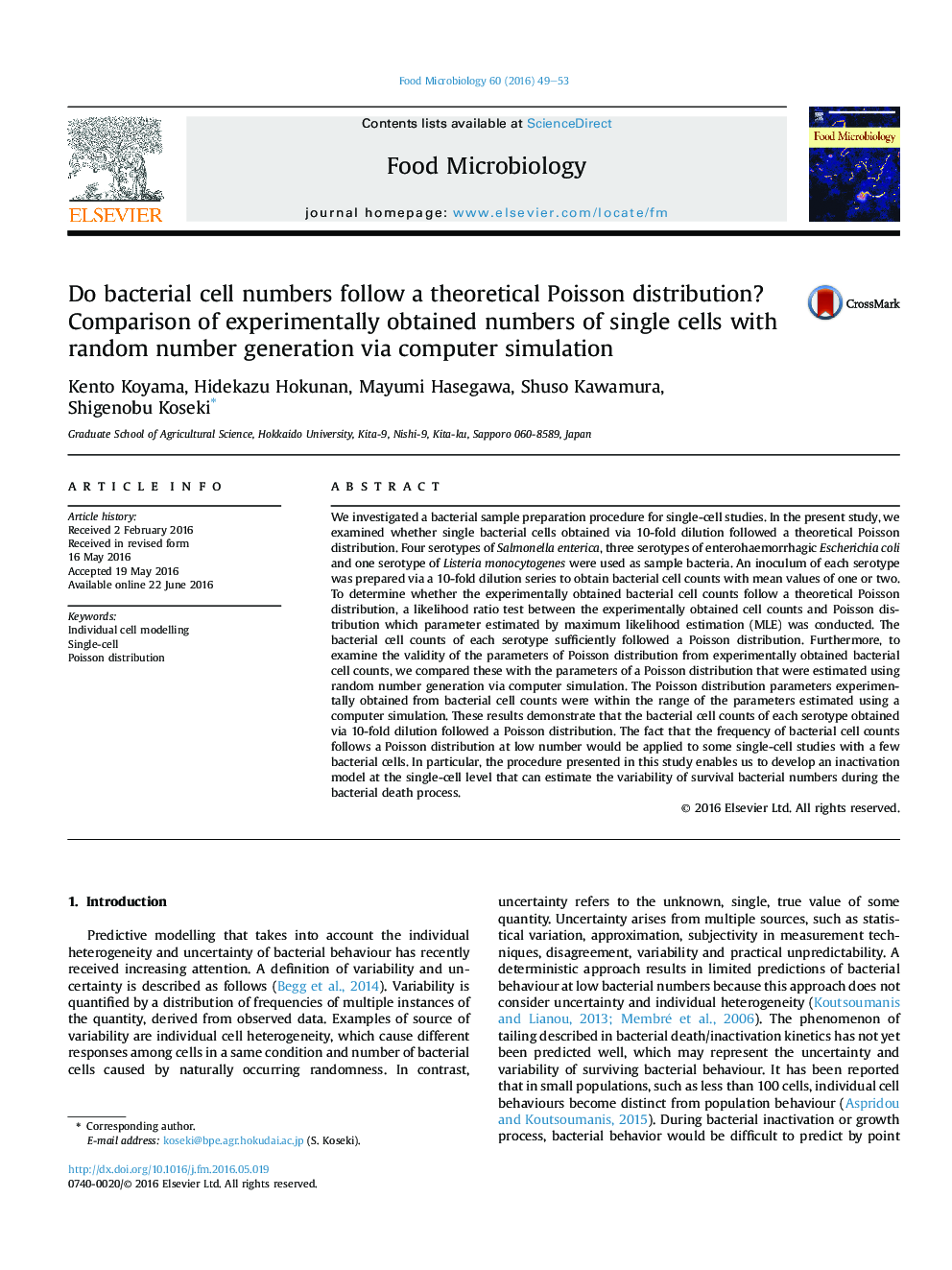| کد مقاله | کد نشریه | سال انتشار | مقاله انگلیسی | نسخه تمام متن |
|---|---|---|---|---|
| 6288342 | 1616241 | 2016 | 5 صفحه PDF | دانلود رایگان |
عنوان انگلیسی مقاله ISI
Do bacterial cell numbers follow a theoretical Poisson distribution? Comparison of experimentally obtained numbers of single cells with random number generation via computer simulation
ترجمه فارسی عنوان
آیا تعداد سلول های باکتریایی توالی نظری پواسون را دنبال می کنند؟ مقایسه تعداد آزمایش سلول های تک سلولی با تولید عدد تصادفی از طریق شبیه سازی کامپیوتری
دانلود مقاله + سفارش ترجمه
دانلود مقاله ISI انگلیسی
رایگان برای ایرانیان
کلمات کلیدی
مدل سازی سلول های فردی، تک سلولی توزیع پواسون،
موضوعات مرتبط
علوم زیستی و بیوفناوری
علوم کشاورزی و بیولوژیک
دانش تغذیه
چکیده انگلیسی
We investigated a bacterial sample preparation procedure for single-cell studies. In the present study, we examined whether single bacterial cells obtained via 10-fold dilution followed a theoretical Poisson distribution. Four serotypes of Salmonella enterica, three serotypes of enterohaemorrhagic Escherichia coli and one serotype of Listeria monocytogenes were used as sample bacteria. An inoculum of each serotype was prepared via a 10-fold dilution series to obtain bacterial cell counts with mean values of one or two. To determine whether the experimentally obtained bacterial cell counts follow a theoretical Poisson distribution, a likelihood ratio test between the experimentally obtained cell counts and Poisson distribution which parameter estimated by maximum likelihood estimation (MLE) was conducted. The bacterial cell counts of each serotype sufficiently followed a Poisson distribution. Furthermore, to examine the validity of the parameters of Poisson distribution from experimentally obtained bacterial cell counts, we compared these with the parameters of a Poisson distribution that were estimated using random number generation via computer simulation. The Poisson distribution parameters experimentally obtained from bacterial cell counts were within the range of the parameters estimated using a computer simulation. These results demonstrate that the bacterial cell counts of each serotype obtained via 10-fold dilution followed a Poisson distribution. The fact that the frequency of bacterial cell counts follows a Poisson distribution at low number would be applied to some single-cell studies with a few bacterial cells. In particular, the procedure presented in this study enables us to develop an inactivation model at the single-cell level that can estimate the variability of survival bacterial numbers during the bacterial death process.
ناشر
Database: Elsevier - ScienceDirect (ساینس دایرکت)
Journal: Food Microbiology - Volume 60, December 2016, Pages 49-53
Journal: Food Microbiology - Volume 60, December 2016, Pages 49-53
نویسندگان
Kento Koyama, Hidekazu Hokunan, Mayumi Hasegawa, Shuso Kawamura, Shigenobu Koseki,
